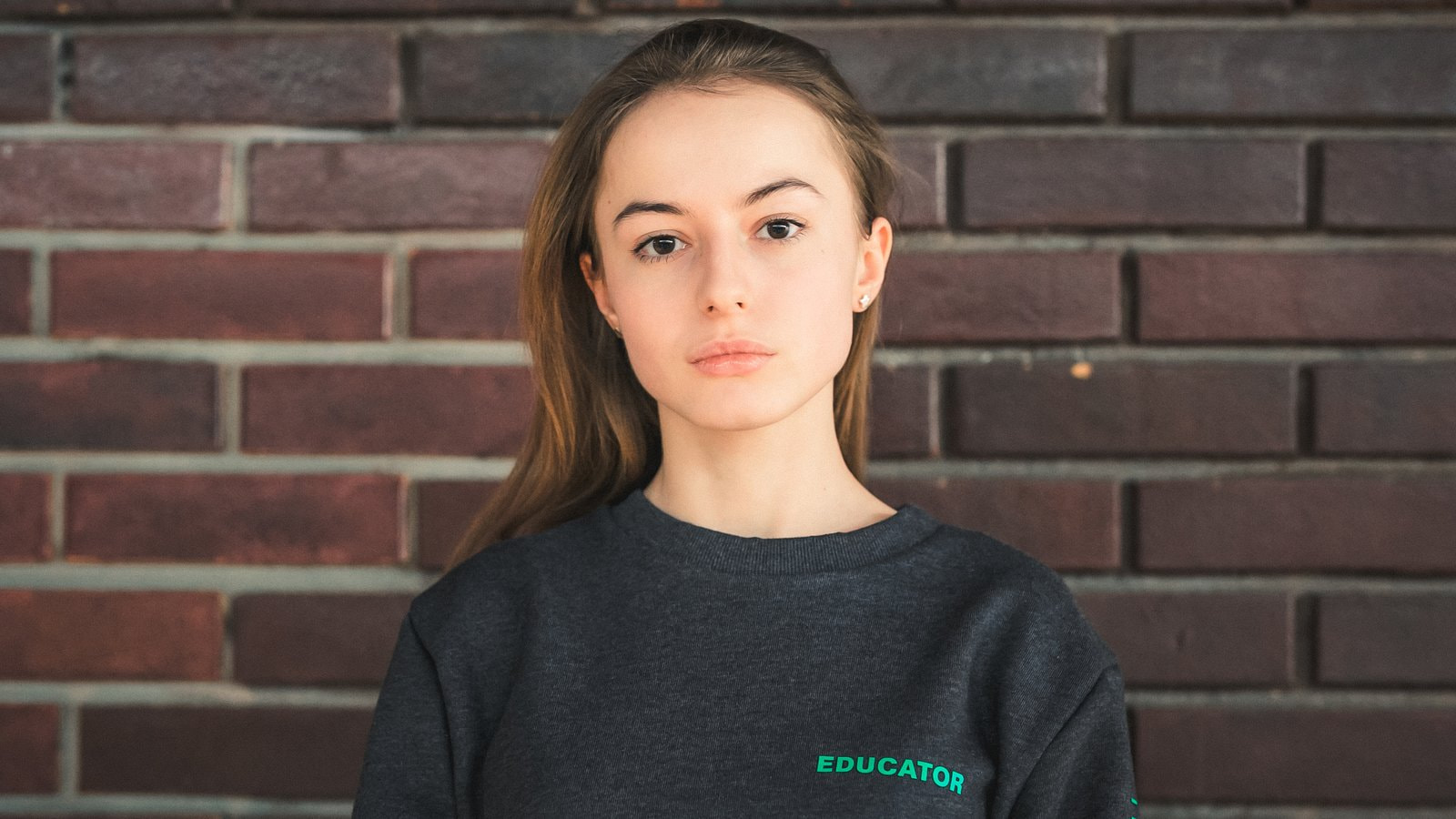Irina Pavlovicheva’s Diary
Irina Pavlovicheva (b. 1998, Ulyanovsk)
I study General Art History at the Faculty of History of Lomonosov Moscow State University. My main academic interest is the art of classical antiquity, especially the forms of exhibiting and representing it to the public. Garage is a vitally important environment for my research, as it helps with understanding whether modern exhibition methods are applicable to other contexts, and whether they correlate with the formats of displaying classic art.
First impressions from the project
On the opening day it was puzzling to find a fine line between not “imposing” and not “leading an excursion”. Now it seems, I have managed to cope with it. But approaches to people should be modified each time (both literally and metaphorically speaking). When we run out of ribbons, we have to find a new catalyzer for interaction. The colorful space interests but sometimes repels people, perhaps being seen as a game room at first with separate playgrounds. This is why I consider Ladder Caféan ideal space for interpreting the rest of the projects in the most compelling and meaningful way.
What visitors say about the Museum
“I like Garage because here no one will stare at me, and I could come and see the same show five ties just to watch other people. By the way, why are we not allowed to see Pepperstein’s survey!?” (17 years old)
A dialogue: a moderator explains the Bureau des transmissionsproject at the entrance to the space. Visitor: “This is what I love Garage for!”— and rushes to the ribbons.
“Does Garage run charity events?’ (reaction to Ekaterina Muromtseva’s video).
Multiple approving comments in the manner “I haven’t seen anything like this before”.
Additional comments (real and ironic)
“If there were Shishkin in between the ribbons, it would have been wonderful” (an elderly woman).
It turned out that many people approved of seeing classic art (in different understandings of the term, of course, but still) in dialogue with contemporary one.
Visitors read the wishes/inscriptions on the ribbons (“looking for a friend”, or “down with feminism”, etc.) and said they would rather not participate in this project… During a short talk, a young couple said they hadn’t missed any Garage exhibitions so far. Perhaps, it began distracting.
An idea came to shoot reports over a cup of tea and edit a video for YouTube.
Emotions
March 6, from a conversation with a Brazilian:
“Oh, thank you, these ribbons made me feel like home, at my favorite carnival.”
A visitor took off his shoes while drinking tea. This was his first visit to the Museum: “I saw the building, and they said it’s a museum.”
A two-year old kid is running across the ribbons, murmuring “beautiful, beautiful, beautiful.” It was amazing when people of different ages, from kids to old ones, gathered together at the same table: this is when the connection between generations was especially felt, even between representatives of different families. Rather than being a place where “an elderly woman” asks you not to touch the walls, the museum turned into an environment where she shares her emotions with school students and everyone discusses Pepperstein together. For me personally, certain stereotypes about the “unsociable Russians” have fallen.
Ideas that popped up during tea drinking
The complexity of a contemporary museum concludes in the fact that it is quite difficult to explain to people that contemporary is in any case part of the entire art historical process (a dialogue about primitive art), and that the emotional component remains one of the most important things. People oftentimes do not understand why they actually come to a museum, why they have to queue (one visitor referenced the Frida Kahlo show with just one phrase: “her neck seems to be so long!”).
All museums move in the direction of contemporaneity anyway.
A question from the mug in theLadder Caféinstallation: “Can the viewer select the contents of the show?”
Answer 1: And who is the viewer, what do you think? Can a moderator be called a viewer too? Or an artist who came to see another artist’s exhibition?
Answer 2: Would be great to gather a small group of people (non-connected directly to art, and with different professional backgrounds), maybe twenty persons, who would discuss and select together the materials for exhibitions.
It turned out that it wasn’t even the question that visitors understood differently, but certain words: the viewer, the audience, etc., with these ones people had most of the problems.
“At first, I felt very unfamiliar in a contemporary museum, it differs so much. But now I even start loving it” (an elderly woman).
The daughter is playing with yarn, the father is waiting for her drinking tea, emphasizing how important it is to instill in a child the feeling of understanding beauty from very young age (hinting that his older daughter already attends Garage education courses, and he would like to enroll the little one too).
Surprisingly, these separate dialogues coincided and intersected with each other at some point, so we had the chance to discuss whether parents should take their child to the Hermitage at a very early age. Coming to the conclusion that art is like religion—something intimate, personal, and can be fostered, or not within a given family, unconsciously. A museum as a place puts in the child the idea of a system as a whole. The return to tactile contact with the exhibited items is an equally great experience for adult visitors (this is from a dialogue with a preschool teacher).
One of the key elements of the project is the lighting, the way it is directed, and its intensity (in the evenings, the lighting above the tables is quite dim, so we were asked about table lamps).
